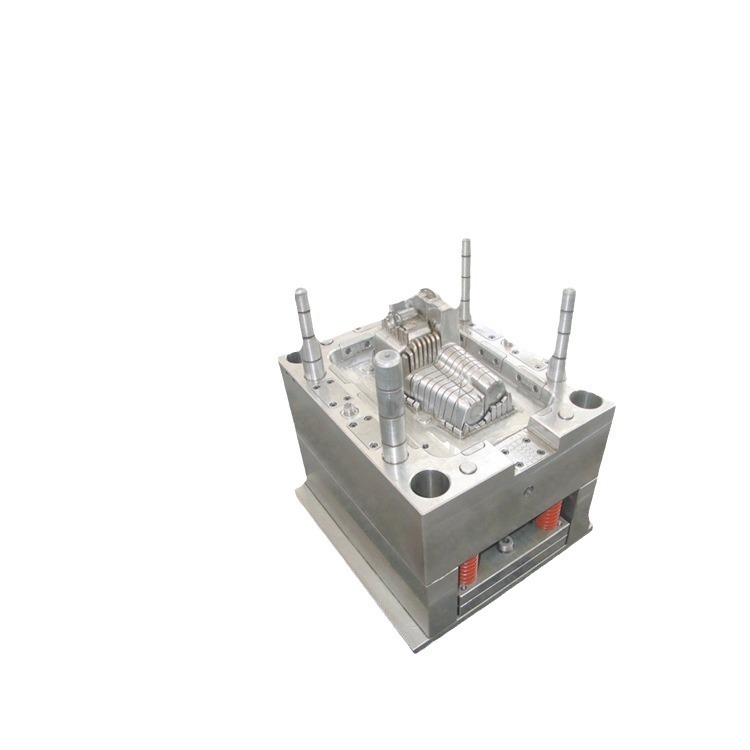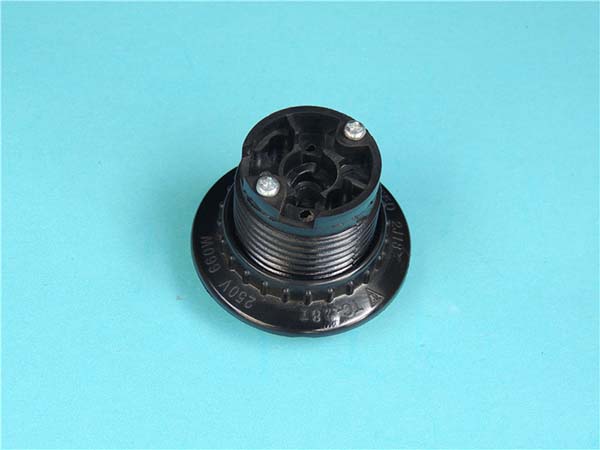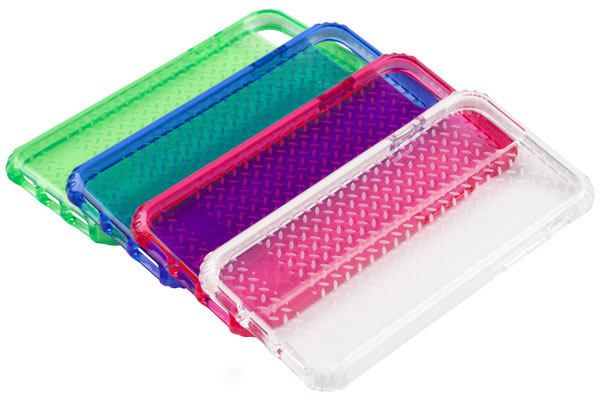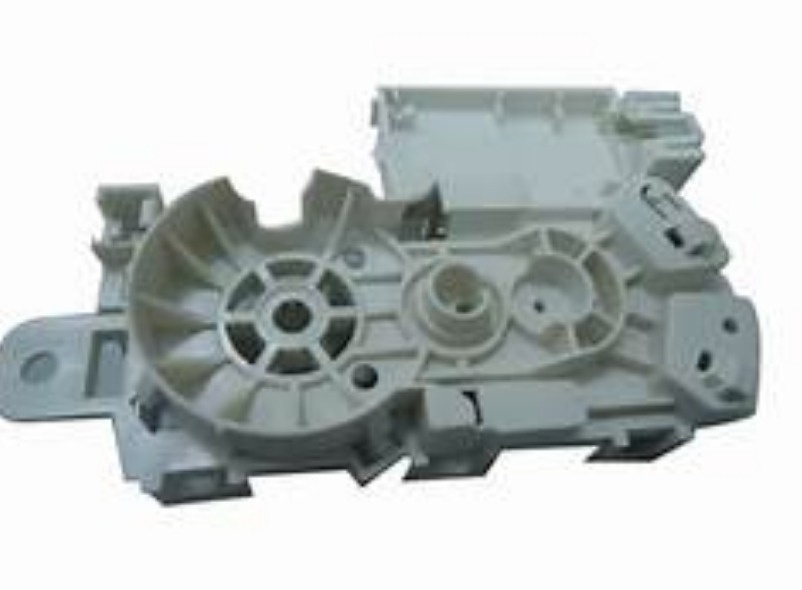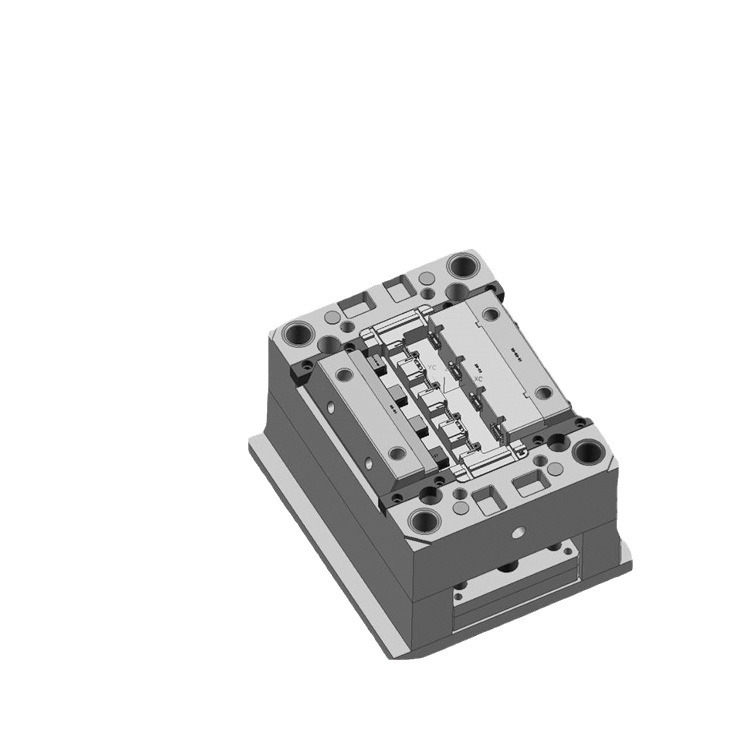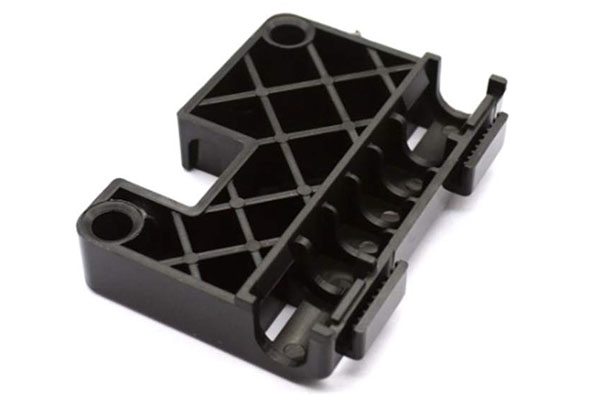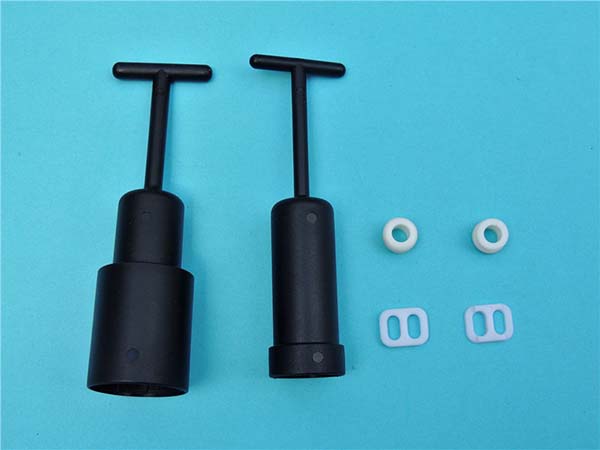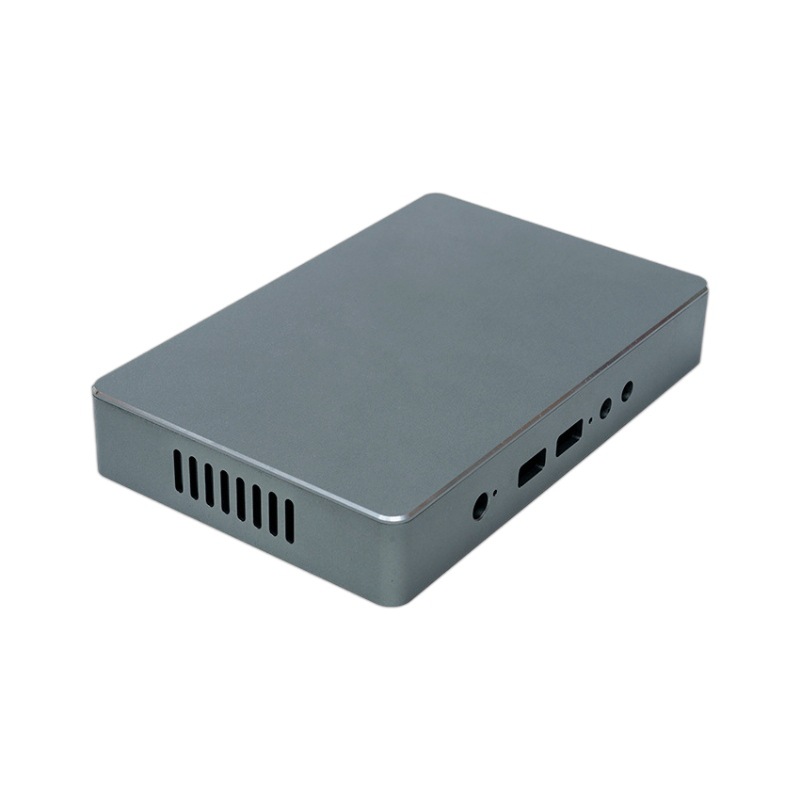IMD Injection Molding: An Overview
IMD Injection Molding, short for In - Mold Decoration Injection Molding, is an innovative manufacturing process that combines the steps of plastic injection molding with in - mold decoration. This technology allows for the creation of plastic parts with integrated, high - quality decorative elements in a single manufacturing step.
The fundamental principle of IMD injection molding is to place a pre - printed and pre - formed plastic film into an injection mold cavity. This film typically consists of several layers: a base film, an ink layer with the desired decorative patterns (such as logos, textures, or colors), and an adhesive layer. Once the film is properly positioned in the mold, molten plastic is injected into the cavity. Under high pressure and temperature, the molten plastic bonds with the adhesive layer of the film, and as it cools and solidifies, the plastic part with the embedded decorative film is formed.
For example, in the production of a smartphone case, an IMD injection molding process can create a case with a beautiful, high - resolution pattern or brand logo directly on the surface during the injection molding process. This eliminates the need for additional post - molding decoration steps like painting or printing, which not only simplifies the manufacturing process but also improves the durability of the decoration. The decorative layer is protected between the plastic substrate and a clear top - coat layer of the film, making it highly resistant to scratches, abrasions, and chemical corrosion.
This process is not only limited to flat or simple - shaped products. It can also be used to create complex 3D shapes with decorative elements, offering great design flexibility. For instance, in the automotive industry, IMD injection molding is used to manufacture interior components such as dashboard panels, where intricate designs and high - quality finishes are required.
The Core Process of IMD Injection Molding
1. Material Selection
Material selection is a fundamental aspect of IMD injection molding, playing a crucial role in determining the final product's performance, appearance, and cost - effectiveness. Here are some common plastic materials used in IMD injection molding and their characteristics:
- ABS (Acrylonitrile Butadiene Styrene): ABS is a popular choice due to its excellent impact resistance, dimensional stability, and surface finish. It has a relatively low melting point, which makes it suitable for injection molding processes. In IMD, ABS can provide a strong substrate for the decorative film. For example, in the production of consumer electronics housings, ABS is often used because it can withstand the stress during daily use and maintain the integrity of the in - mold decoration. However, it has a relatively high water absorption rate, which may affect the adhesion between the plastic and the film if not properly dried before molding.
- PC (Polycarbonate): PC offers high heat resistance, outstanding mechanical properties, and excellent transparency. These properties make it ideal for applications where high - temperature resistance and optical clarity are required, such as in automotive headlamp lenses with IMD - decorated bezels. PC also has good chemical resistance, which can protect the decorative layer from environmental corrosion. But it is more expensive than some other plastics, and its processing requires precise temperature control due to its high melting point.
- PMMA (Polymethyl Methacrylate): PMMA, also known as acrylic, is highly valued for its excellent transparency, which is even better than that of PC in some cases. It has a beautiful appearance and good weather resistance, making it suitable for outdoor applications like signage with IMD - applied graphics. PMMA is relatively brittle compared to ABS and PC, so proper design and processing are needed to prevent cracking during the IMD process.
- PBT (Polybutylene Terephthalate): PBT has good chemical resistance, high - temperature resistance, and dimensional stability. It is often used in applications where these properties are crucial, such as in electrical and automotive components. In IMD injection molding, PBT can ensure that the product maintains its shape and the decorative layer remains intact under various environmental conditions. However, PBT has a relatively high viscosity during processing, which may require higher injection pressures.
2. The Stages of IMD Process
The IMD injection molding process consists of several sequential and precise stages, each with its own set of operations and technical requirements:
- Film Printing: This is the initial stage where the desired decorative patterns, colors, and logos are printed onto a plastic film. High - quality inks, such as UV - curable inks, are commonly used for their fast curing speed and excellent adhesion to the film. The printing method can be screen printing, offset printing, or digital printing, depending on the complexity and quantity of the design. For instance, for a large - scale production of IMD - decorated smartphone back covers with detailed patterns, offset printing may be preferred for its high - speed and high - precision capabilities. The printing process must ensure accurate registration of colors and sharpness of the design to achieve the desired aesthetic effect.
- Film Punching and Cutting: After printing, the film is punched and cut into the appropriate shape and size that matches the final product. Precision cutting tools are used to ensure that the edges are smooth and the dimensions are accurate within a tight tolerance, usually within ±0.05mm. This is crucial for proper fitment of the film inside the injection mold cavity. For example, in the production of IMD - decorated automotive interior panels with complex shapes, laser cutting may be employed to achieve the high - precision cutting required.
- Thermoforming: The cut - to - size printed film then undergoes thermoforming. During this stage, the film is heated to a specific temperature range (usually between 80 - 150°C depending on the film material) to make it pliable. It is then formed into the desired three - dimensional shape using a mold and vacuum or pressure assistance. For a curved IMD - decorated component like a motorcycle helmet visor, a custom - designed thermoforming mold is used to shape the film precisely to fit the visor's contour. The thermoforming process must be carefully controlled to avoid over - stretching or uneven thinning of the film, which could affect the final appearance and durability of the product.
- Injection Molding: The pre - formed and printed film is placed into the injection mold cavity. Molten plastic is then injected into the cavity at high pressure (usually in the range of 30 - 100 MPa) and temperature (ranging from 180 - 300°C depending on the plastic material). The molten plastic fills the cavity, conforming to the shape of the mold and bonding with the adhesive layer on the back of the film. As the plastic cools and solidifies, the IMD - decorated plastic part is formed. For example, when manufacturing an IMD - decorated power tool housing, the injection molding machine injects the molten plastic (such as ABS) into the mold containing the pre - formed film. The cooling time is also carefully regulated to ensure proper solidification and dimensional stability of the final product, typically ranging from 10 - 30 seconds depending on the size and thickness of the part.
Comparison with Traditional Decoration Methods
1. Traditional Painting and Printing
When comparing IMD injection molding with traditional painting and printing methods, several distinct differences emerge:
| Comparison Items | Traditional Painting and Printing | IMD Injection Molding |
| Process Complexity | Multiple steps are involved, including surface pretreatment, primer application, color coating, and clear - coat application. Each step requires careful drying and curing processes. For example, in the painting of a car body, there are usually 5 - 7 steps, which is a time - consuming and labor - intensive process. | A relatively integrated process. It combines decoration and molding in one step. After the film is prepared (printing, punching, and thermoforming), it is directly placed in the injection mold for molding, reducing the number of process steps. |
| Cost | High costs due to the need for a large amount of paint, solvents, and labor for multiple coating and finishing operations. The cost of paint materials and the cost of treating volatile organic compounds (VOCs) generated during the painting process also contribute to the high cost. For small - scale production of 10,000 plastic parts, the painting cost may be around $50,000. | Higher initial investment in molds and equipment, but in the long run, for large - scale production (more than 100,000 pieces), the unit cost is lower. Once the mold is developed, the cost per piece can be reduced due to the high - efficiency one - step production process. |
| Durability of the Effect | The painted or printed layer is relatively exposed, and it is prone to scratches, fading, and peeling over time. In outdoor applications, painted surfaces may start to show signs of wear and discoloration within 1 - 2 years. | The decorative layer in IMD is protected between the plastic substrate and the top - coat layer of the film, providing excellent scratch resistance, abrasion resistance, and chemical corrosion resistance. Products with IMD decoration can maintain their appearance for more than 5 years even under harsh environmental conditions. |
| Design Flexibility | Limited in creating complex 3D shapes with consistent and high - quality decoration. It is difficult to ensure uniform coating thickness and accurate pattern transfer on complex surfaces. | Can easily achieve decoration on complex 3D shapes. The pre - formed film can be shaped to fit the mold cavity, allowing for the creation of highly detailed and aesthetically pleasing designs on various - shaped products. |
2. Labeling Techniques
IMD in - mold labeling also has significant advantages over traditional external labeling:
| Comparison Items | Traditional External Labeling | IMD In - Mold Labeling |
| Adhesion | The label adheres to the surface of the product through an adhesive, and over time, due to temperature changes, humidity, and mechanical friction, the label may peel off. For example, in a high - humidity environment, the adhesion of traditional labels may be reduced by 30% within a month. | The film in IMD is integrated with the plastic part during the injection molding process, forming a strong chemical bond. The adhesion is extremely strong, and the film is less likely to peel off, even under extreme conditions. |
| Aesthetic Appeal | The label may have edges that are visible, and there may be gaps or misalignments, which can affect the overall appearance of the product. | Creates a seamless and smooth appearance. The film is molded into the product, and there are no visible edges or seams, providing a more high - end and professional look. |
| Durability | Prone to damage from scratches, water, and chemicals, which can cause the label to fade, tear, or become unreadable. | Highly durable, with the ability to resist scratches, abrasions, and chemical corrosion. The protective film layer in IMD ensures that the label - like decoration remains intact for a long time. |
Yigu Technology's Perspective
As a non - standard plastic metal products custom supplier, Yigu Technology highly values the IMD injection molding technology. This innovative process has opened up new possibilities in our custom manufacturing services.
In non - standard plastic metal product customization, IMD injection molding allows us to integrate complex decorative elements directly into the product during the molding process. This not only meets the unique design requirements of our customers but also significantly improves the product's aesthetics and durability. For example, when creating custom - designed automotive interior components with non - standard shapes, IMD injection molding enables us to add high - quality decorative patterns and labels that are resistant to the harsh environment inside the vehicle.
Moreover, IMD injection molding helps us enhance the competitiveness of our products. By reducing the need for multiple post - molding decoration steps, we can shorten the production cycle and lower costs. This means we can offer more cost - effective solutions to our customers without sacrificing quality. The high - quality and long - lasting decorative effects achieved through IMD also make our custom products more appealing in the market, giving our clients an edge over their competitors.
FAQ
1. What types of plastics are most suitable for IMD injection molding?
Plastics like ABS, PC, PMMA, and PBT are highly suitable. ABS offers good impact resistance and dimensional stability, with a relatively low melting point for easy processing. PC has high heat resistance and excellent mechanical properties. PMMA is known for its outstanding transparency and weather resistance. PBT provides good chemical and high - temperature resistance along with dimensional stability. Each of these plastics has unique characteristics that make them well - matched for the IMD injection molding process, depending on the specific requirements of the final product.
2. How can we ensure the color accuracy in IMD printing?
To ensure color accuracy in IMD printing, first, use high - quality, calibrated color measurement instruments to precisely match and control the ink colors. Advanced color management systems can help in maintaining consistency across different production batches. The printing equipment should be regularly calibrated to ensure accurate dot gain and color registration. Additionally, the inks used should have good lightfastness and stability to prevent color fading or shifting during the subsequent IMD process steps, such as thermoforming and injection molding.
3. What are the main differences between IMD and IML?
IMD (In - Mold Decoration) is a broader term that encompasses various in - mold decoration techniques. IML (In - Mold Labeling) is a subset of IMD. In terms of process, IMD involves placing a pre - printed and pre - formed plastic film into the injection mold for decoration integration. IML specifically focuses on placing a printed label - like film in the mold and then injecting plastic. In terms of application, IMD can create more complex 3D decorative effects on products. IML is often used for 2D or relatively simple 3D products. Also, IML allows for easier pattern and color changes during production as it doesn't always require significant mold modifications like some IMD processes might.
